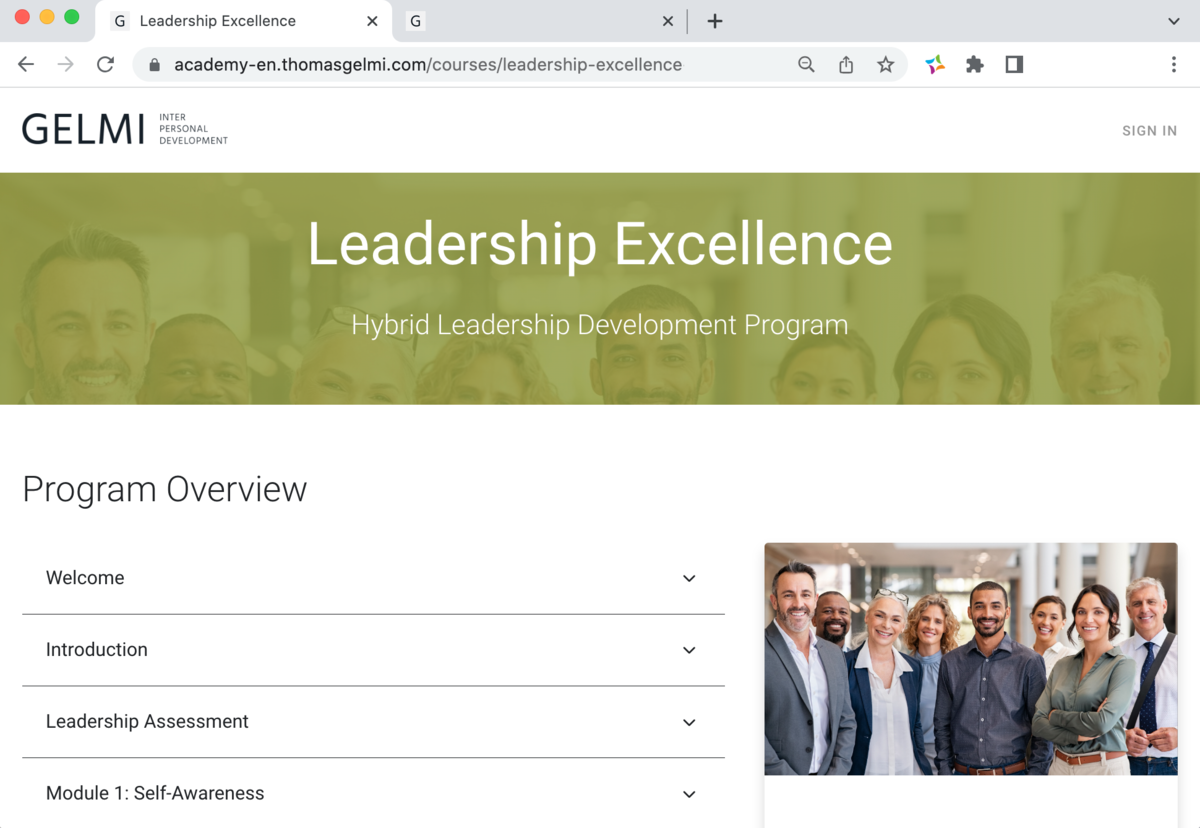How we do it
More humanity and thus greater effectiveness in leadership and collaboration is not achieved through superficial techniques and methods, but through sustainable personality development. There are no quick fixes here. Moreover, the times when «trainers» stood in front of groups of participants in «seminars» are definitely over. Today, effective and sustainable development is a process consisting of a combination of diverse channels and instruments. Autonomous learning and individual coaching go hand in hand. The focus is on maximum flexibility in terms of location and time as well as individual and situational learning with the greatest possible practical relevance.
Contemporary and sustainable:
Autonomous eLearning, individual coaching
Our hands-on development programs are designed for both individuals and groups. Participants independently explore diverse topics relevant to their specific situation. These are presented in a state-of-the-art digital learning environment designed to be user-friendly, multilingual, and easy to understand. In addition, the participants are supported through moderated workshops and/or individual one-on-one coaching sessions to allow for sustainable transfer into their individual practice.
Further advantages of our programs:
- Contemporary participant-centered forms of knowledge transfer and skill development
- Flexibility in terms of location and time: Participants determine when and where they learn and do so at their own pace (asynchronous learning)
- Practice-oriented coaching, individually or in groups (synchronous learning)
- Less absence of participants from their daily business
- Sustainability: Minimal or no travel by coach and participants and thus time-, cost- and environment-friendly

Growth and development:
Leaving the comfort zone
Growth and development rarely take place within the comfort zone, but usually outside it. Creating awareness and recognizing new alternatives for thinking and acting do not necessarily require stepping outside the comfort zone yet. Only with the practical application to one’s own situation, at the interface between know-how and do-how, does this step become necessary. That is, when it is a matter of concretely changing something and maintaining it in the long term. Ultimately, this is the most important step, but one that most people fail at. Here, we support you with proven instruments to take this decisive step.
Sustainable change:
Forming new habits
Ultimately, it’s about making lasting changes by forming new thinking and behavioral habits in adults. This is not a light switch that you simply flip, but a process that begins with awareness (A) because we can only influence what we are aware of. Once this is given, the second step (B) requires alternatives for mind-set and action, meaning that I need to know what I can assess and/or do differently in the future. Subsequently, concrete intentions (C) adapted to my individual situation are necessary in order to gradually change my actions and behaviors (D) and to integrate them in the long term (E).
